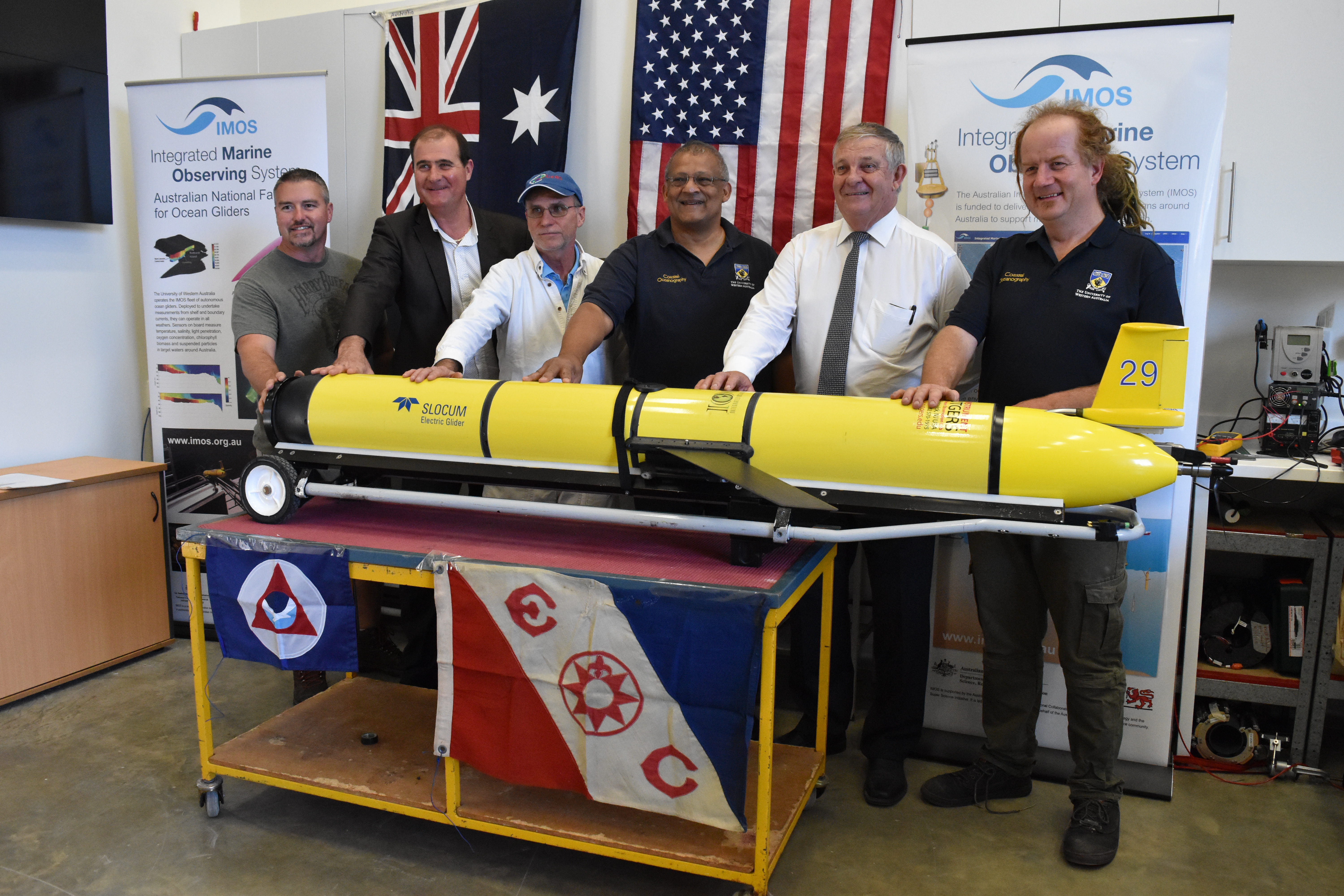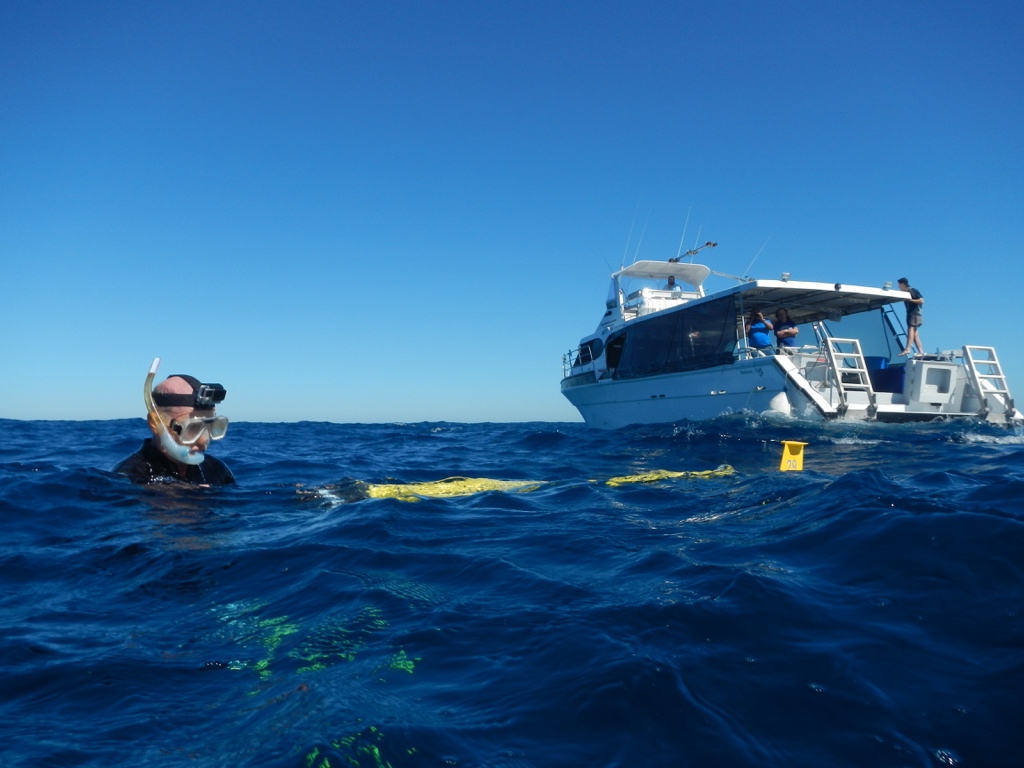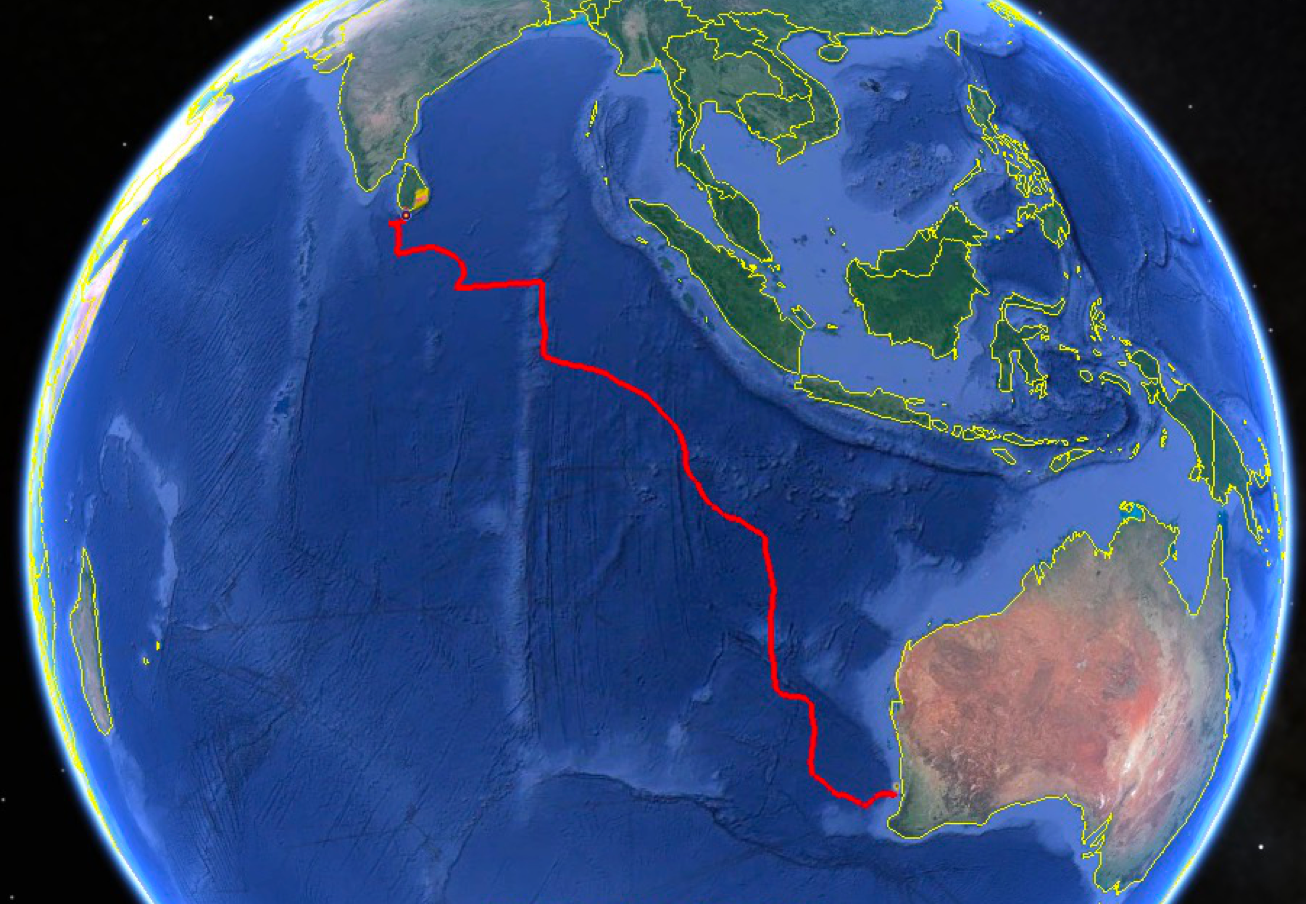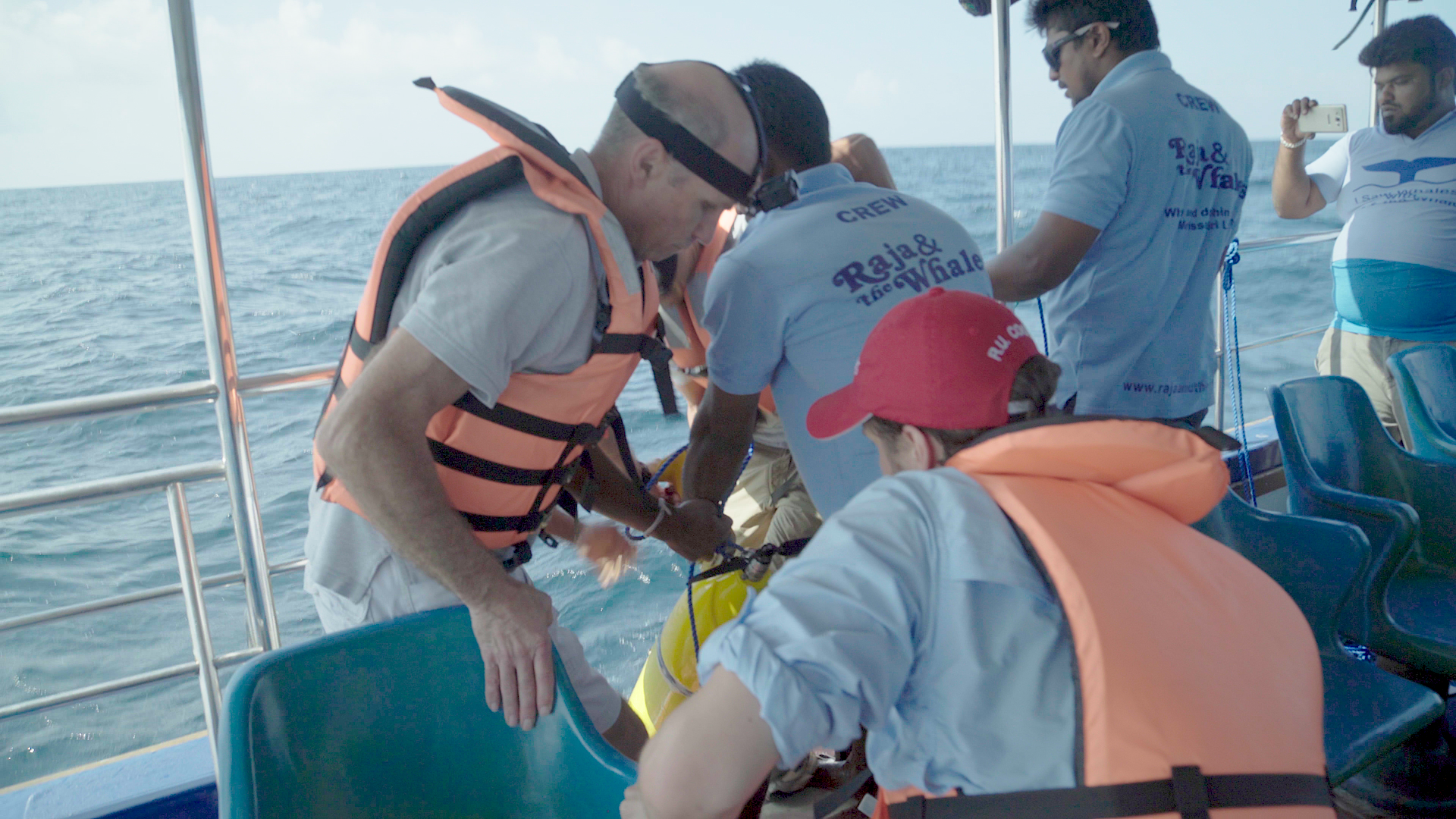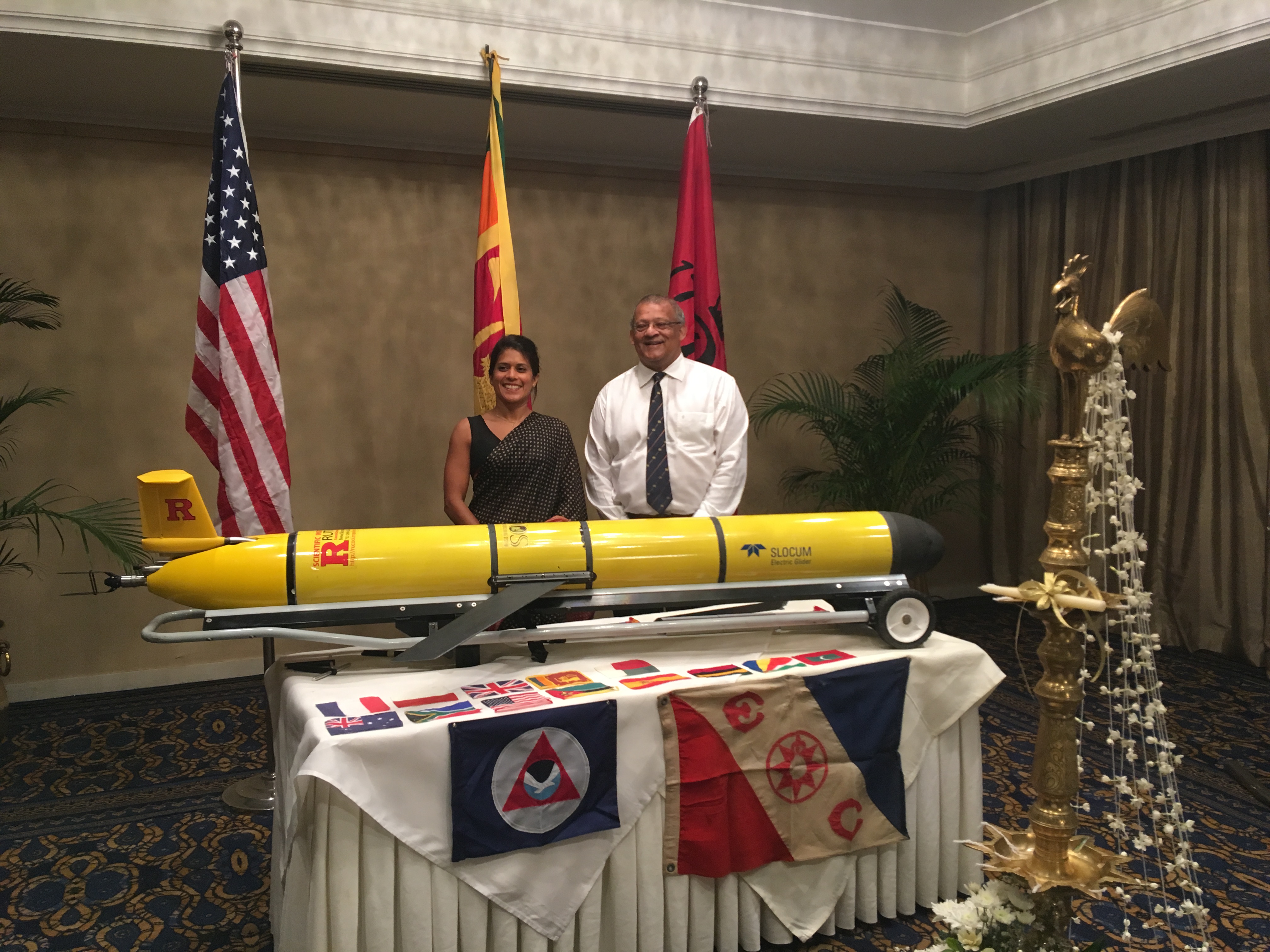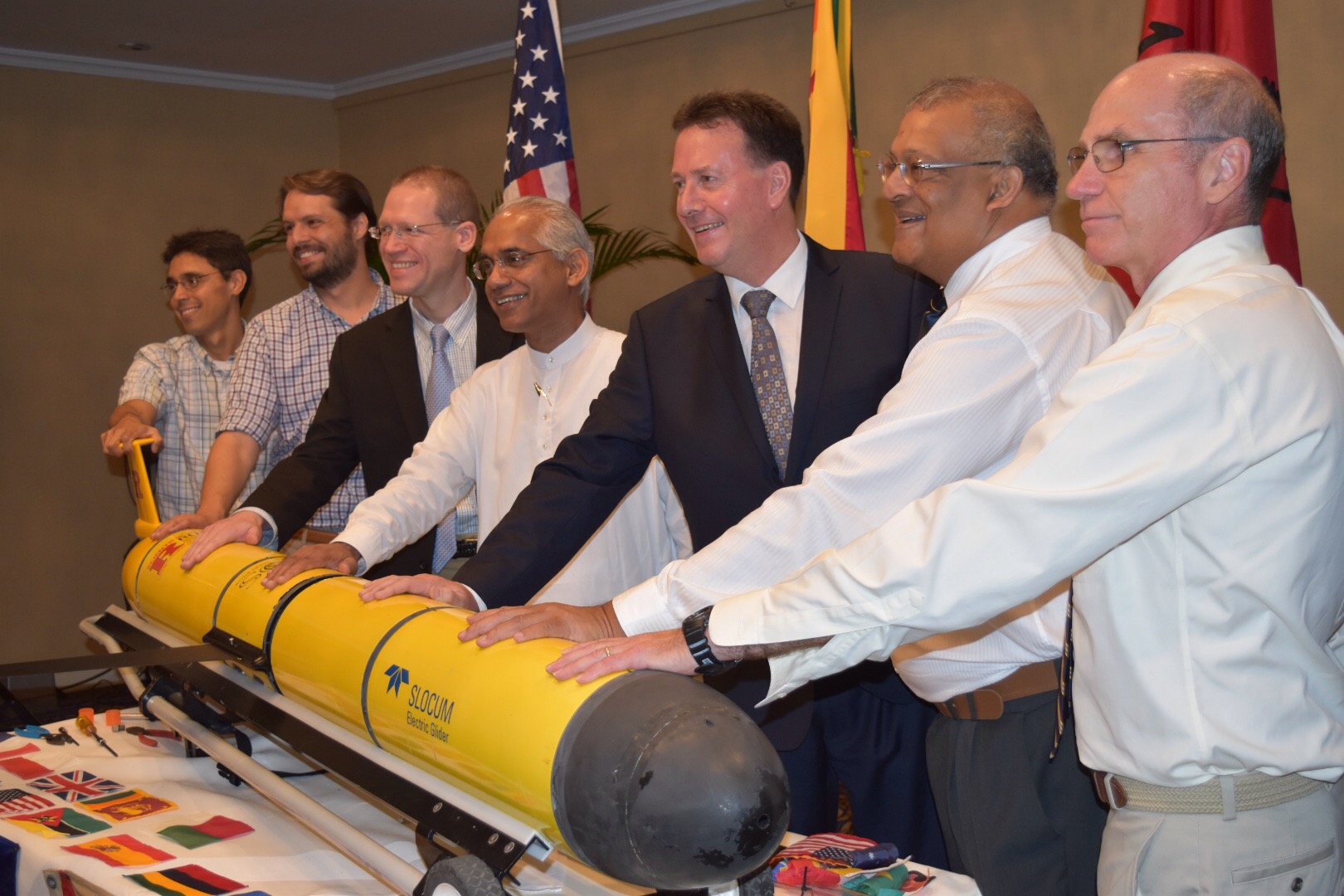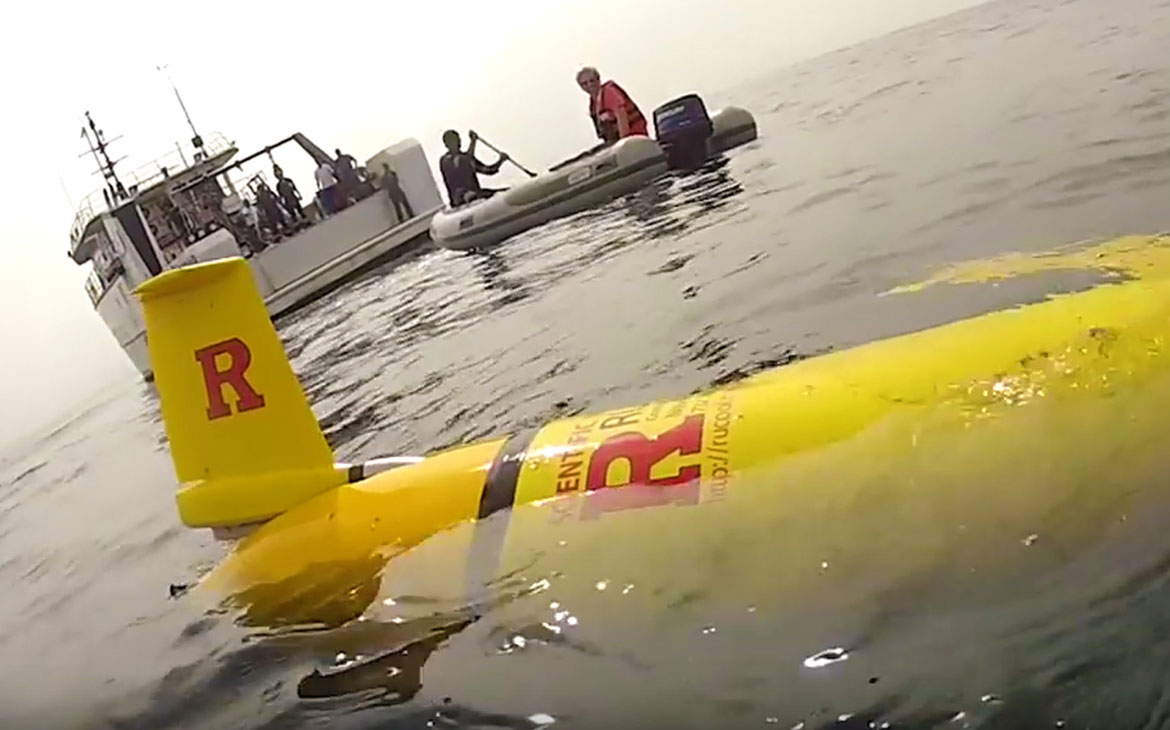An international team of scientists and students has just completed the first of three legs in a three-year effort to be the first to navigate an autonomous underwater robot completely around the Indian Ocean. The mission was conducted as part of the global Challenger Glider Mission as a contribution to the Second International Indian Ocean Experiment (IIOE-2). At sea operations were conducted by Rutgers University and the University of Western Australia, with shore support provided by scientists from the US, UK, Australia, Spain, South Africa, Brazil, Germany, Indonesia and Sri Lanka.
Leg 1 from Perth, Australia to Colombo, Sri Lanka was flown by Rutgers underwater glider RU29, setting a new undersea world record for distance, covering the 7,570 km in 330 continuous days at sea. RU29 beat the team’s previous world record of 7,420 km set by Glider RU27 in the historic first crossing of the North Atlantic in 2009. RU29 is already the first underwater glider to circle the South Atlantic from 2013 to 2016.
RU29 will soon begin the second leg of the Indian Ocean circumnavigation on a similar 7,500 km mission from Sri Lanka to South Africa.
